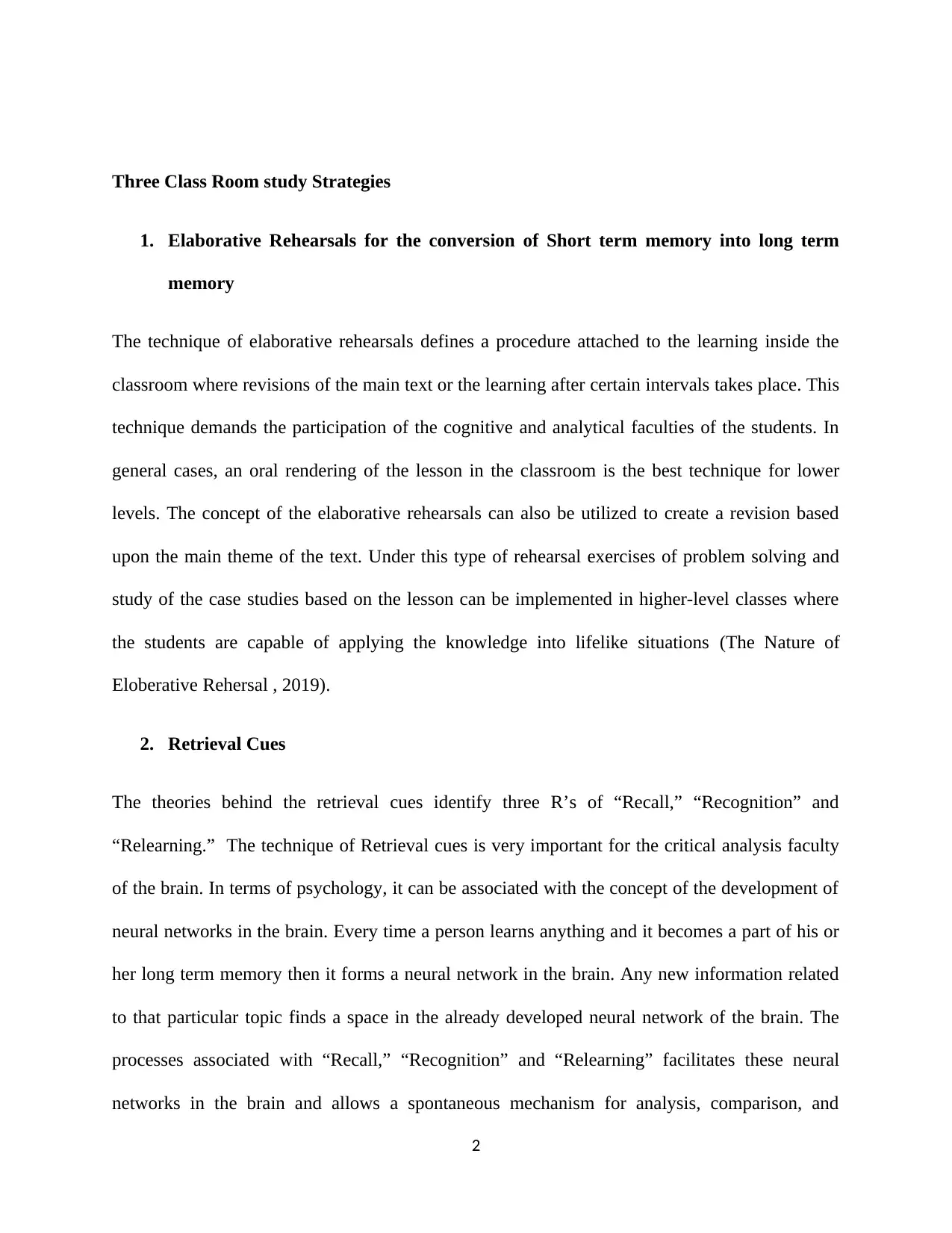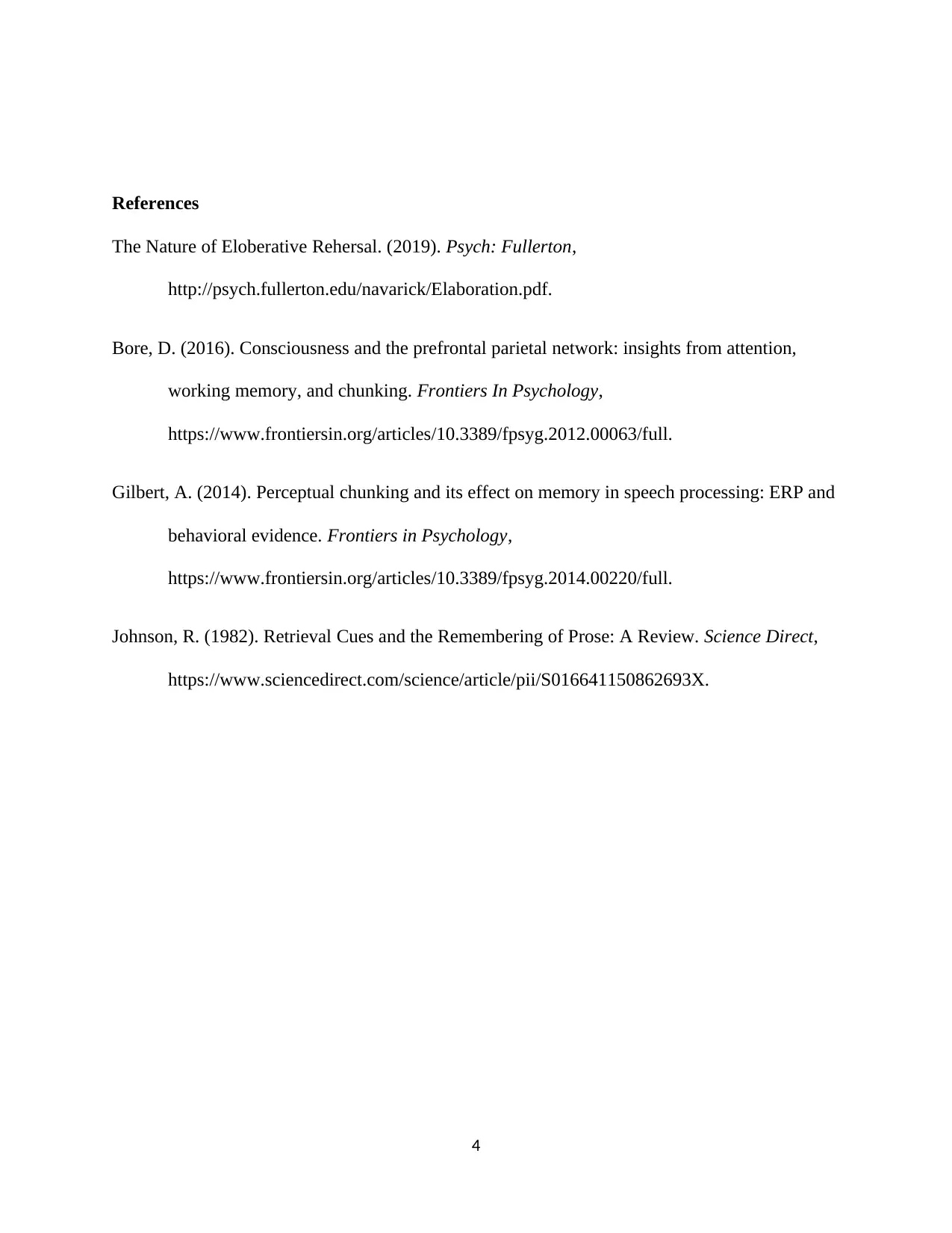Psychology of Learning: Three Classroom Study Strategies Explained
VerifiedAdded on 2022/08/15
|4
|714
|11
Homework Assignment
AI Summary
This assignment explores three effective classroom study strategies to enhance learning and memory. The first strategy, elaborative rehearsals, focuses on converting short-term memory into long-term memory through cognitive and analytical engagement, often involving revisions and problem-solving exercises. The second strategy, retrieval cues, emphasizes the importance of recall, recognition, and relearning, which facilitate the development of neural networks in the brain, enabling analysis and assimilation of facts through classroom activities and tests. The third strategy, working memory/chunking, promotes the organization of information into meaningful chunks to improve short-term memory efficiency and facilitate its transfer to long-term memory, using techniques like charts and checklists. The document provides references to support these strategies.
1 out of 4






![[object Object]](/_next/static/media/star-bottom.7253800d.svg)